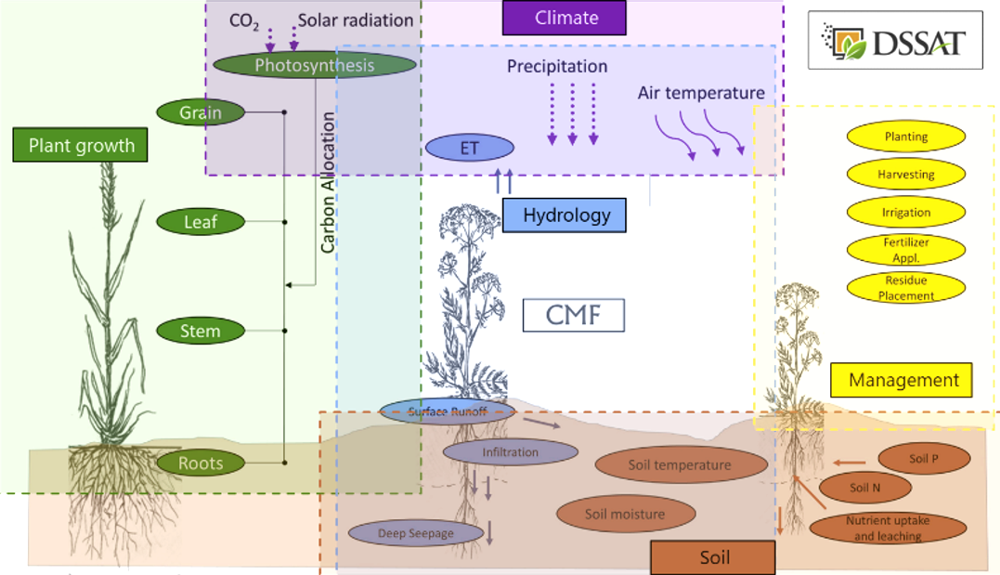C1: Agrarökosystem-Modellierung der Versuchsstandorte
Die Anwendung prozessbasierter Pflanzenmodelle bietet die Möglichkeit, kleinräumig erfasste Versuchsergebnisse auf größere räumliche und zeitliche Skalen zu übertragen. Während Umweltauswirkungen im Feld häufig erst nach Jahrzehnten sichtbar werden, kann ein Modell durch präzise Nachbildung der Interaktionen zwischen Pflanze, Boden und Atmosphäre schnell und großskalig eine Abschätzung darüber treffen, wie sich Managementszenarien langfristig auf Erträge, Nährstoff- und Wasserflüsse auswirken.
Mit dem DSSAT-Modell, das auch in TRIO angewandt werden soll, wurden bereits vielfach erfolgreich Weizenerträge unter unterschiedlichen Management- und Klimaszenarien simuliert. Es besteht jedoch Entwicklungsbedarf für Modellroutinen, die Managementstrategien wie Mischkulturen mit ihren engen Pflanzen-Wasser-Nährstoff-Interaktionen robust abbilden können. Auch mehrjährige Kulturen sind in herkömmlichen Modellen nicht berücksichtigt. Zudem ist für eine präzise Bestimmung von Trockenstresseinflüssen eine verbesserte Bodenwasserbilanzberechnung vonnöten (s. TP C2). TRIO liefert durch die vielfältigen Feldstudien und Praxisbetriebe eine optimale Grundlage für eine fundierte Kalibrierung und Validierung optimierter und neuer Modellerweiterungen.
Arbeitspakete und Beteiligte
AP 1: Optimierung des DSSAT-Modells zur Abbildung der Nährstoff- und Wasserkonkurrenz von Weizen-Kümmel- bzw. Weizen-Koriander-Mischkulturen
AP 2: Simulationen von Nährstoff-, Wasser-, und Ertragsbilanzen der Reinsaaten und Mischkulturen mit dem DSSAT-Model

